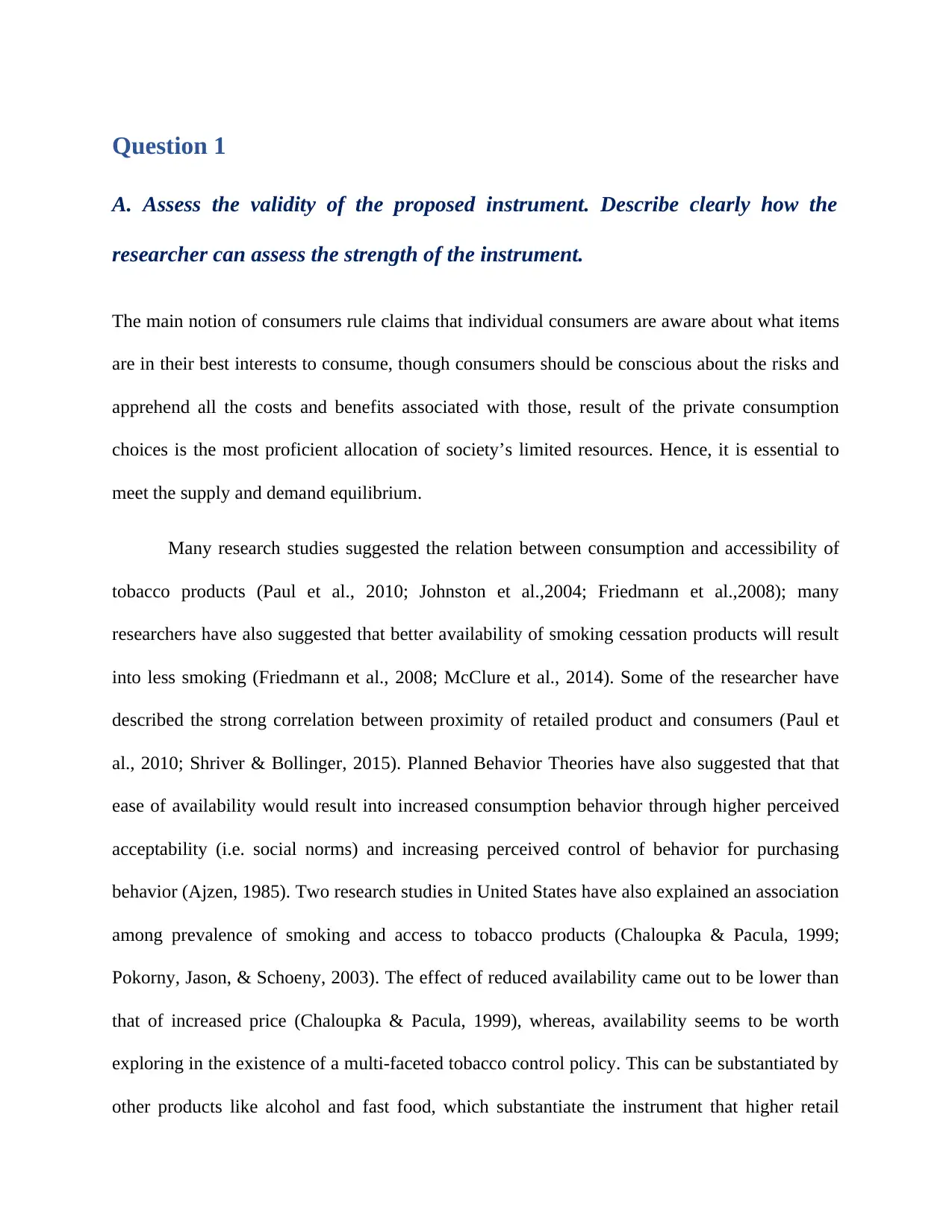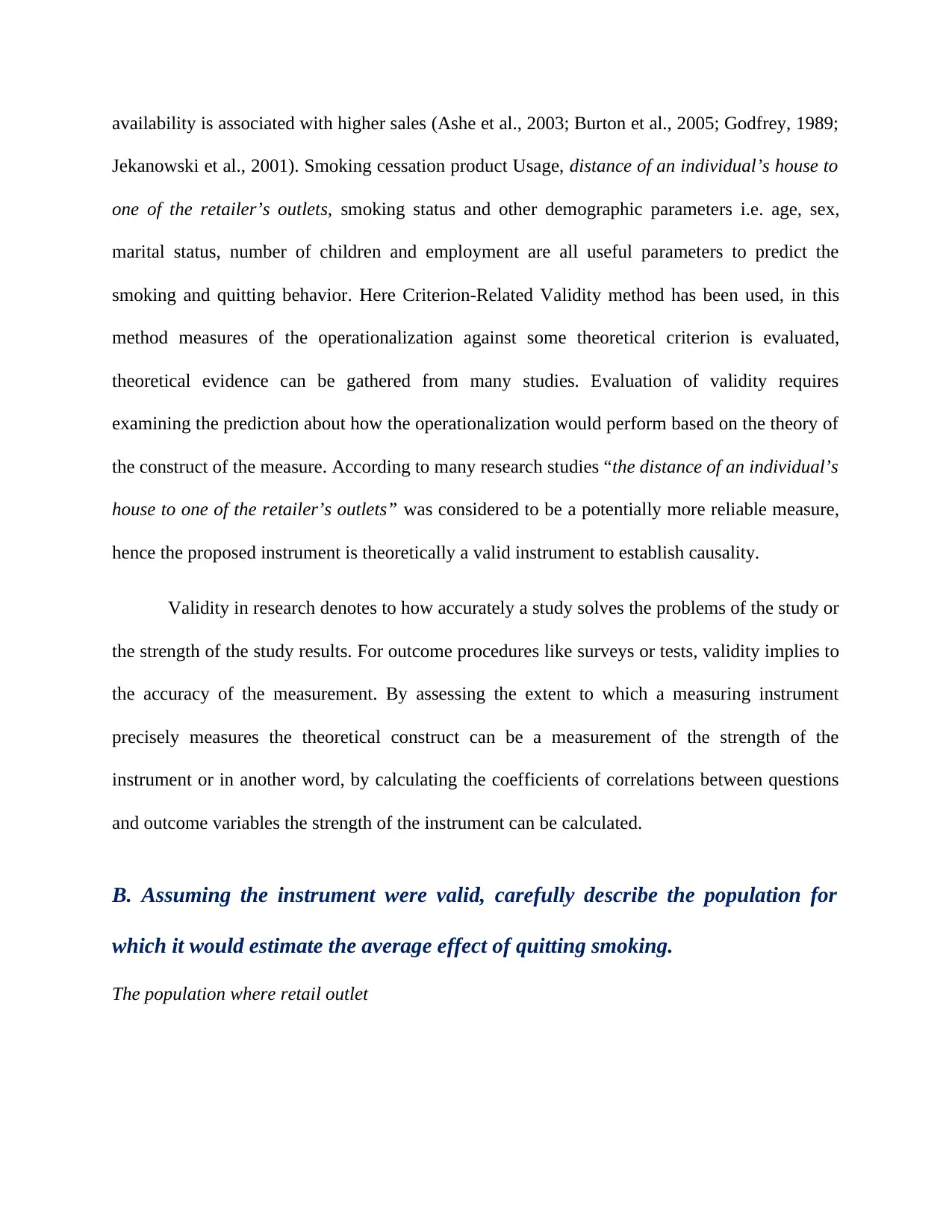Validity and Population Analysis of a Smoking Cessation Instrument
VerifiedAdded on 2020/03/01
|2
|629
|38
Report
AI Summary
This report assesses the validity of a smoking cessation instrument designed to evaluate the average effect of quitting smoking. The analysis employs the Criterion-Related Validity method, examining the relationship between the instrument's measures and established theoretical criteria, such as the impact of retail outlet proximity on smoking behavior and the use of smoking cessation products. The report draws on various research studies to substantiate the instrument's theoretical validity, highlighting the correlation between consumer behavior and access to tobacco products. The report also discusses the population for which the instrument would be most applicable, considering factors like smoking status, demographic parameters, and the influence of retail environments. By examining the instrument's ability to accurately measure the theoretical construct, the report provides a comprehensive evaluation of its strength and potential impact on public health research and interventions.
1 out of 2




![[object Object]](/_next/static/media/star-bottom.7253800d.svg)